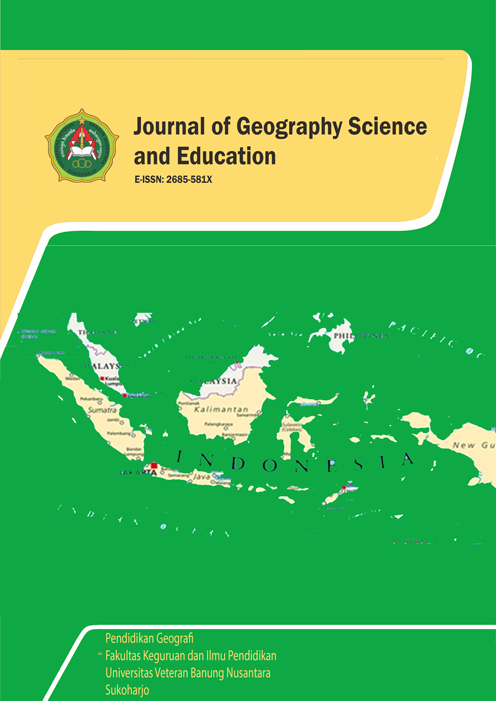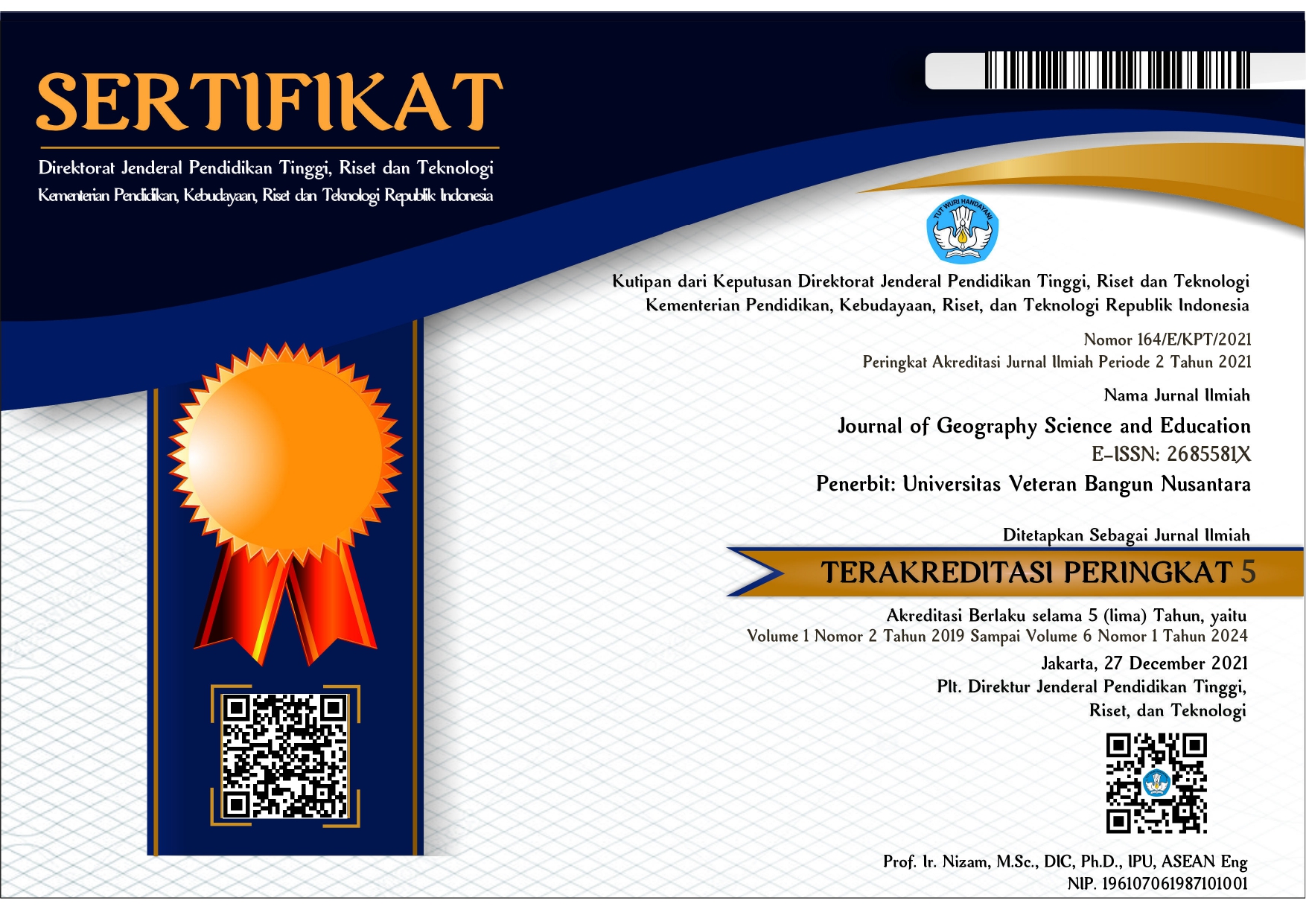Development of an Internet of Things-based Environmental Information System for Realtime Monitoring of Air Conditions
DOI:
https://doi.org/10.32585/jgse.v6i1.4688Abstract
This study aims to develop an environmental information system called the Environmental Monitoring System (EENNOS) to monitor air environmental conditions. ENNOS is an Internet of Things (IoT) based system that monitors air environmental conditions in the form of temperature, humidity and carbon dioxide. The research was conducted using the 4D development method which consisted of the Define, Design, Develop, and Disseminate stages. EENNOS was developed using a DHT 22 sensor for DHT 22 temperature and humidity and a carbon dioxide sensor with MQ-135. The controller used is Arduino uno ESP8266 with output sending using the internet to the database and presented on the dashboard and displayed on a 16x2 liquid crystal screen. The output is in the form of dashboard innovations that are registered with copyrights and scientific publications in the form of articles in the Journal of Environmental Sciences.
Downloads
Downloads
Published
How to Cite
Issue
Section
License
Copyright (c) 2024 Aru Dewangga, R. Muh. Amin, Sunarto, Widhi Himawan, Fadhil Achmad Zaky, Daffa’ Nur Waskito

This work is licensed under a Creative Commons Attribution-ShareAlike 4.0 International License.
Authors who publish with the Journal of Geography Science and Education agree to the following terms:
- Authors retain copyright and grant the journal the right of first publication with the work simultaneously licensed under a Creative Commons Attribution License (CC BY-SA 4.0) that allows others to share the work with an acknowledgment of the work's authorship and initial publication in this journal.
- Authors are able to enter into separate, additional contractual arrangements for the non-exclusive distribution of the journal's published version of the work (e.g., post it to an institutional repository or publish it in a book), with an acknowledgment of its initial publication in this journal.
- Authors are permitted and encouraged to post their work online (e.g., in institutional repositories or on their website) prior to and during the submission process, as it can lead to productive exchanges, as well as earlier and greater citation of published work.










